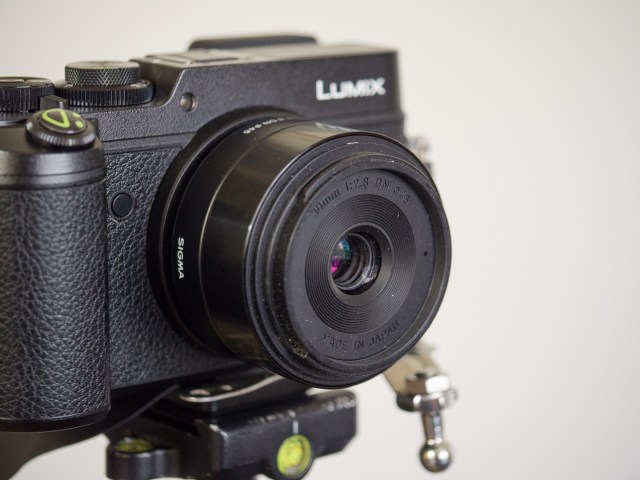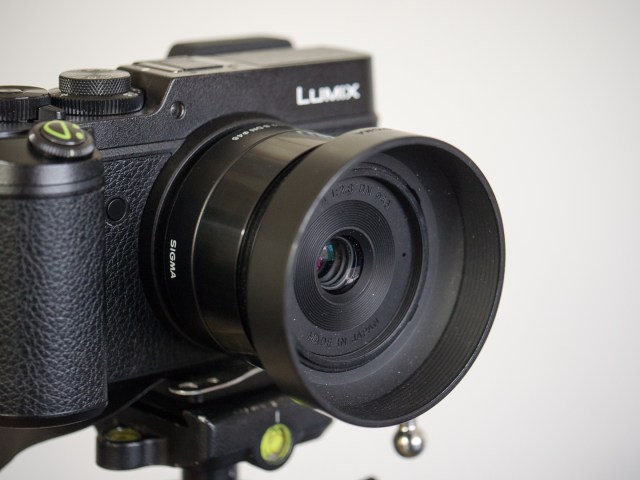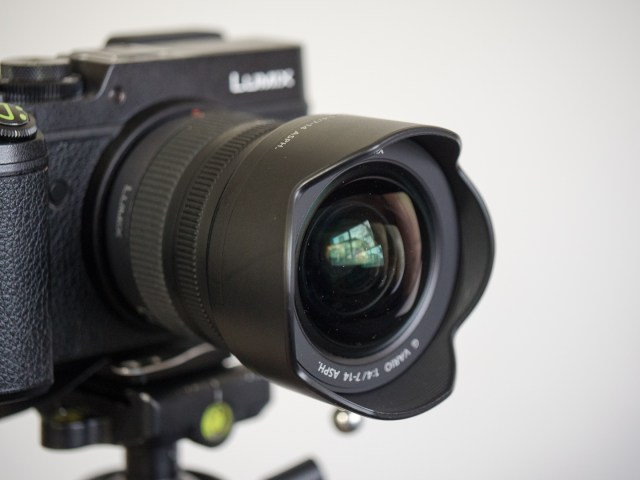I often see photographers misusing an important piece of gear, and it’s one of the simplest tools in your bag. Many lenses come with a lens hood, and right now I’ll show you why you have it and why you should be using it.
What does a lens hood do?
The lens hood is intended to keep the sun from shining into the front of your lens and ruining your pictures. Not that it’ll keep the sun from shining in if you point it at the sun, but it keeps the sun from shining across the front of the lens and reducing contrast. These two pictures are taken straight from my camera with exactly the same exposure settings. The only difference is the one on the right is shaded, as a lens hood would do. The picture on the left has less contrast–the blacks aren’t black, they’re gray.
.mgl-tiles { display: none; } #mgl-gallery-63e3a9d409b83 { margin: -2.5px; width: calc(100% + 5px); } #mgl-gallery-63e3a9d409b83 .mgl-box { padding: 2.5px; } @media screen and (max-width: 768px) { #mgl-gallery-63e3a9d409b83 { margin: -2.5px; width: calc(100% + 5px); } #mgl-gallery-63e3a9d409b83 .mgl-box { padding: 2.5px; } } @media screen and (max-width: 460px) { #mgl-gallery-63e3a9d409b83 { margin: -2.5px; width: calc(100% + 5px); } #mgl-gallery-63e3a9d409b83 .mgl-box { padding: 2.5px; } }
Lumix GX8, Leica 100-400mm lens (preproduction), f/6.3, 1/160s, ISO 400.
Lumix GX8, Leica 100-400mm lens (preproduction), f/6.3, 1/160s, ISO 400. See? Even Mark looks happier with better contrast.
Have you ever been driving your car in the late afternoon with the sun shining in and the entire windshield becoming very hard to see through, and only when you drive through shade can you see out? Well, the lens hood provides that kind of shade and it helps your lens make an image with good contrast.
Why’s it shaped funny?
There are two shapes for lens hoods: round and petal. The round hoods have been around for a long time, and are simply a cylinder that attaches at the end of the lens. The round style is usually on a prime lens and is designed to be as large as possible without being visible in the frame.
.mgl-tiles { display: none; } #mgl-gallery-63e3a9d40ae6f { margin: -2.5px; width: calc(100% + 5px); } #mgl-gallery-63e3a9d40ae6f .mgl-box { padding: 2.5px; } @media screen and (max-width: 768px) { #mgl-gallery-63e3a9d40ae6f { margin: -2.5px; width: calc(100% + 5px); } #mgl-gallery-63e3a9d40ae6f .mgl-box { padding: 2.5px; } } @media screen and (max-width: 460px) { #mgl-gallery-63e3a9d40ae6f { margin: -2.5px; width: calc(100% + 5px); } #mgl-gallery-63e3a9d40ae6f .mgl-box { padding: 2.5px; } }
30mm lens without hood.
30mm lens with simple hood. It’s cylindrical and removable.
Petal-shaped lens hood-like four flower petals around the glass. Many ultra wide lenses, like this 7-14mm, come with the lens hood built-in.
Petal hoods (they kinda look like flower petals) are a little more modern, and you’ll only find them on zoom lenses. The cutouts allow the hood to give maximum coverage without being seen in the frame at all zoom lengths. If you use a round hood on a wide zoom, you’ll see it in the picture, starting at the four corners as you zoom wide; that’s why the petal style has the corners removed.
Why do I need it?
Well, you need it to keep contrast in your pictures. Unless you like the sun-flare-low-contrast-look, of course. In that case, the hood may give you great contrast and remove the trendiness 😉
Even better, the hood extends past the front of the lens a long way, and it’s great for keeping the lens clean. You’re less likely to put a fat thumbprint on the lens with the hood in place, and when shooting food or other macro work the hood will bump the bbq sauce before the front of the lens. It’s also good protection against bumps that could damage the front of the lens.
What’s that? Do you use a UV filter to protect the front of your lens? Well, then you’ll get those sun-flare-low-contrast pictures even easier because that filter is great for reducing contrast and image quality. Personally, I leave the UV filter at home and bring the Lens hood everywhere I go.
One last thing
Sometimes the lens hood doesn’t snap in place securely, and it may twist or fall off too easily. If a petal hood is mounted askew, it’ll show in the corners of the frame. So, use a small piece of gaffer tape on the bayonet mount where the hood attaches to the lens. That’ll make the connection a little bit thicker and more secure and keep it from falling off.
Tell your story with the second annual Visual Storytelling Conference!
Experience four days of interactive, online training sessions featuring a range of educational content with experienced photographers and content creators. This free event kicks off with a series of technical boot camps to build essential skills, followed by live, online sessions on photography, video, business and social media. Join live from March 10-13, 2022!
